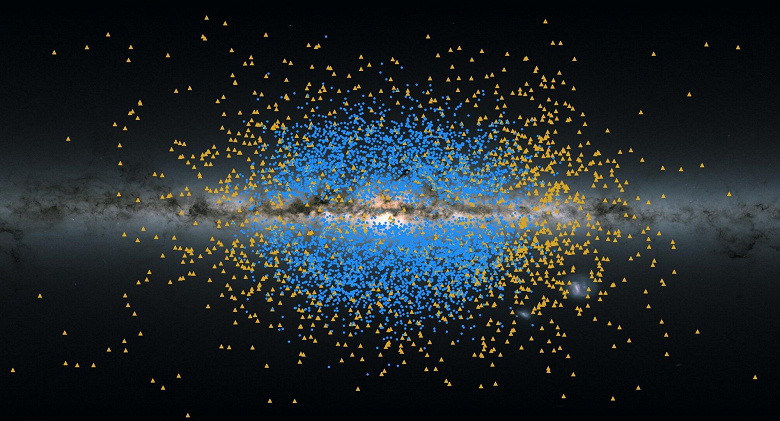Gaia space telescope reveals unique details about the origins of our galaxy
Using the Gaia space telescope, astronomers have studied two stellar streams that likely form the basis of the Milky Way. These streams, called Shakti and Shiva, consist of approximately 10 million stars, which are between 12 and 13 billion years old. According to the study, these flows «merged» even before the formation of the spiral arms and disk of the galaxy. They move in approximately the same orbits and have a similar chemical composition. Astronomers believe these were separate galaxies that merged to form the Milky Way shortly after the Big Bang.
Lead author of the study, Khyati Malhan from the Max Planck Institute for Astronomy in Heidelberg (Germany), notes that the discovery of these ancient structures is surprising. The Milky Way has undergone significant changes since the birth of these stars, so expectations were not high. However, data obtained from the Gaia mission made this possible.
Gaia uses astrometry to precisely measure the positions and movements of stars and other objects in the Universe. This mission creates the largest and most accurate three-dimensional map of our galaxy, examining nearly two billion objects.
With this data, researchers were able to determine the orbits of individual stars in the Milky Way, as well as their chemical composition. Details of the chemical composition indicated that these stars are the oldest stars in the galaxy, «born» before the formation of the Milky Way disk.
Experts note that these stars are very ancient objects that lack the heavy metal elements created in the later stages of the Universe. Heavy elements form inside stars and spread throughout the galaxy after they die. “The stars in the heart of our galaxy are poor in metals, so we called this region “the poor old heart” Milky Way. Until now, only these very early fragments were known, which came together and formed the “heart” Milky Way. As for Shakti and Shiva, we now see the first parts of these ancient structures, which are old, but located far from the center of the Milky Way. This is evidence of the first stages of the growth of our galaxy, — said Kyati.
Despite the fact that the flows of «Shiva and Shakti» similar, they have some differences. The Shakti stars orbit slightly further from the center of the Milky Way and in more circular orbits than the Shiva stars. These streams were named after the two divine beings from Hindu philosophy who created the universe.
With Gaia's ability to provide detailed data, researchers were able to create a dynamic map that includes these two stellar streams, as well as other known components that play a role in the formation of our galaxy.
Timo Prusti, Gaia project scientist, emphasizes that the goal of the Gaia mission is to uncover more information about the origins of our galaxy. He says understanding how the Milky Way formed and evolved requires pinpointing the differences between the galaxy's stars. By discovering regions of our galaxy such as the Shiva and Shakti streams, scientists are filling in the gaps and getting a more complete picture of not only our galaxy, but also the earliest cosmic history.

